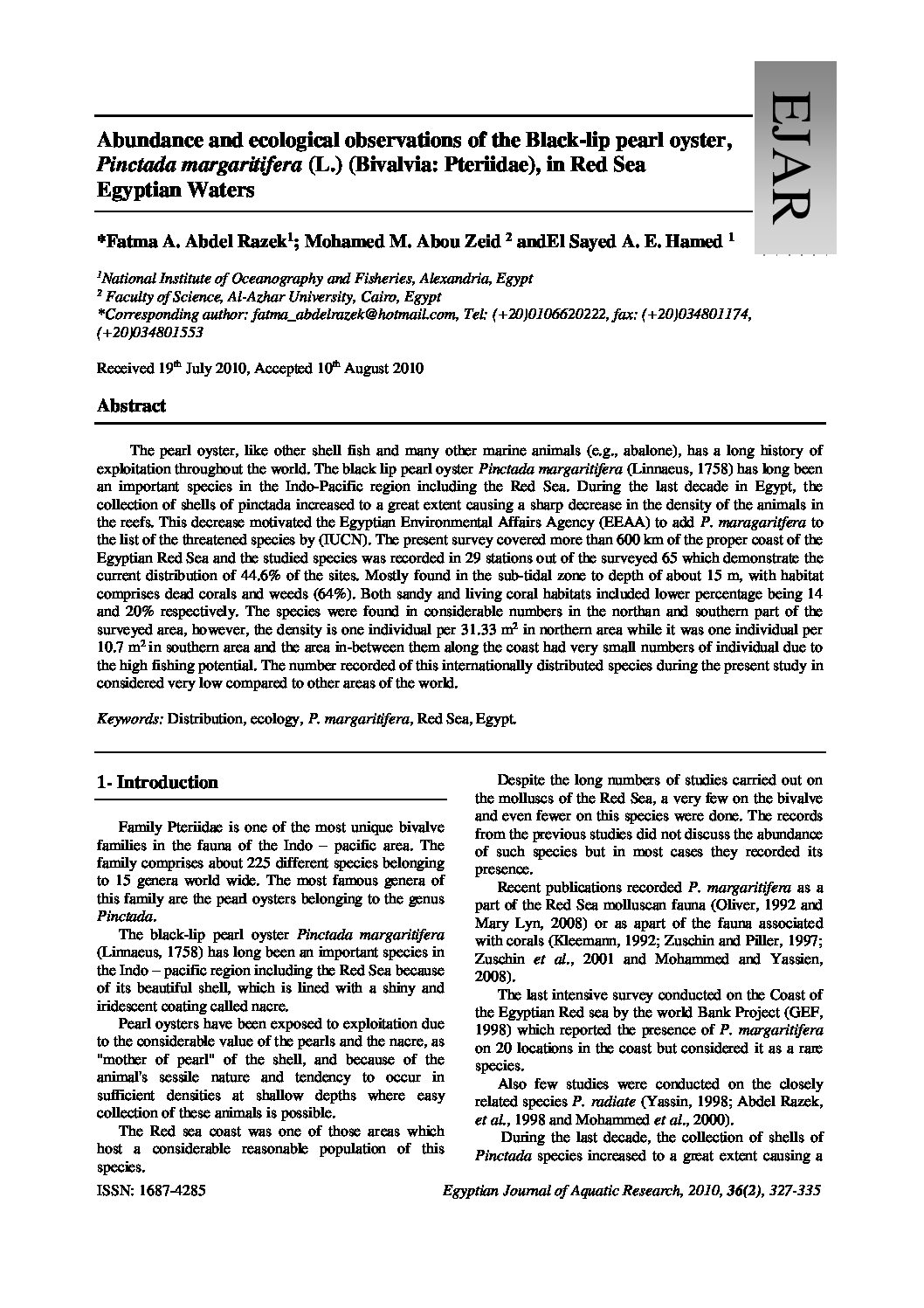Categories
vol-36DNA fingerprinting of some tilapia fish in Suez Canal zone
Mohamed E. Megahed1*, Mahmoud M. Rifaat2
, Mohamed A. EL Danasoury1
,
Safaa M. Sharaf1
1
Department of Animal Production and Fish Resources, Faculty of Agriculture,
Suez Canal University, Ismailia, 41522.
2
Department of Plant Genetics, Faculty of Agriculture, Suez Canal University, Ismailia, 41522.
*Email: [email protected]
Received 9th December 2010, Accepted 3rd March 2010
Abstract
This study was conducted on samples collected from three wild environments with different salinities in the
Suez Canal zone involving four species Oreochromis niloticus, Oreochromis aureus, Sarotherodon galilaeus and
Tilapia zilli. Random Amplified Polymorphic DNA (RAPD PCR) using ten decamers primers was conducted on
representative samples from the four species collected from the three different environments in the Suez Canal zone
zilli fresh (ZF), zilli brakish (ZB), Zilli saline (ZS), niloticus fresh (NF), niloticus brakish (NB), aureus fresh (AF),
aureus brakish (AB), galilaeus fresh (GF), and galilaeus brakish (GB). 340 bands were identified in the nine
populations. The RAPD patterns generated by primers (OPA-03) and (OPA-19) were together sufficient to
distinguish the nine tilapia populations. The discrimination indices of primers 1 and 6 were 0.89 and 0.83
respectively. The major components of variance for RAPD markers accounted for 72 % of the variance. The use of
two ways clustering revealed that certain RAPD markers are associated with adaptation of the genomes to salinity or
brackish water conditions. These markers will be useful in future experiments on MAS breeding for tolerance to
salinity in Nile Tilapia.
Keywords: DNA Fingerprinting, RAPD-PCR, Tilapia, salinity, Suez Canal.







